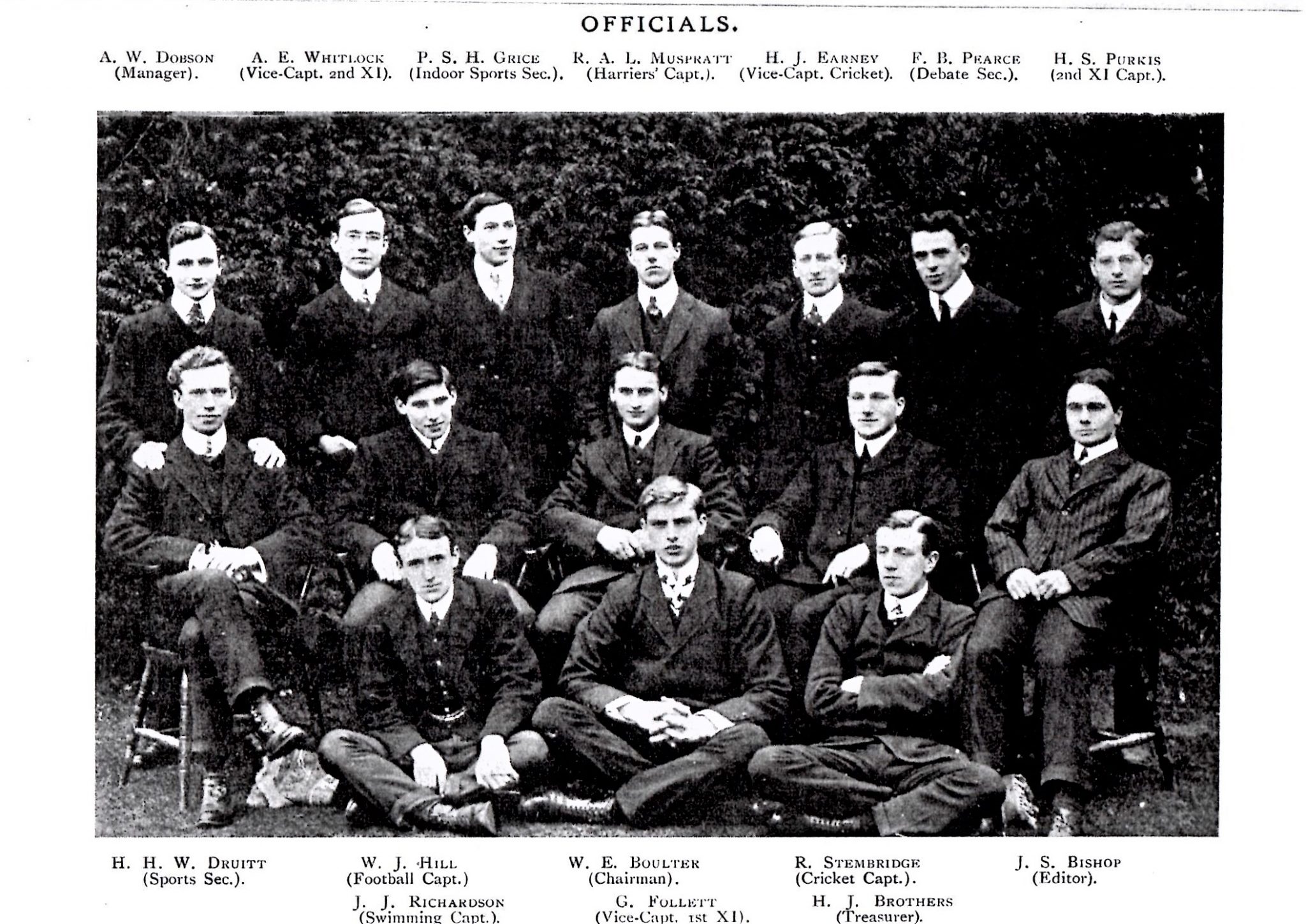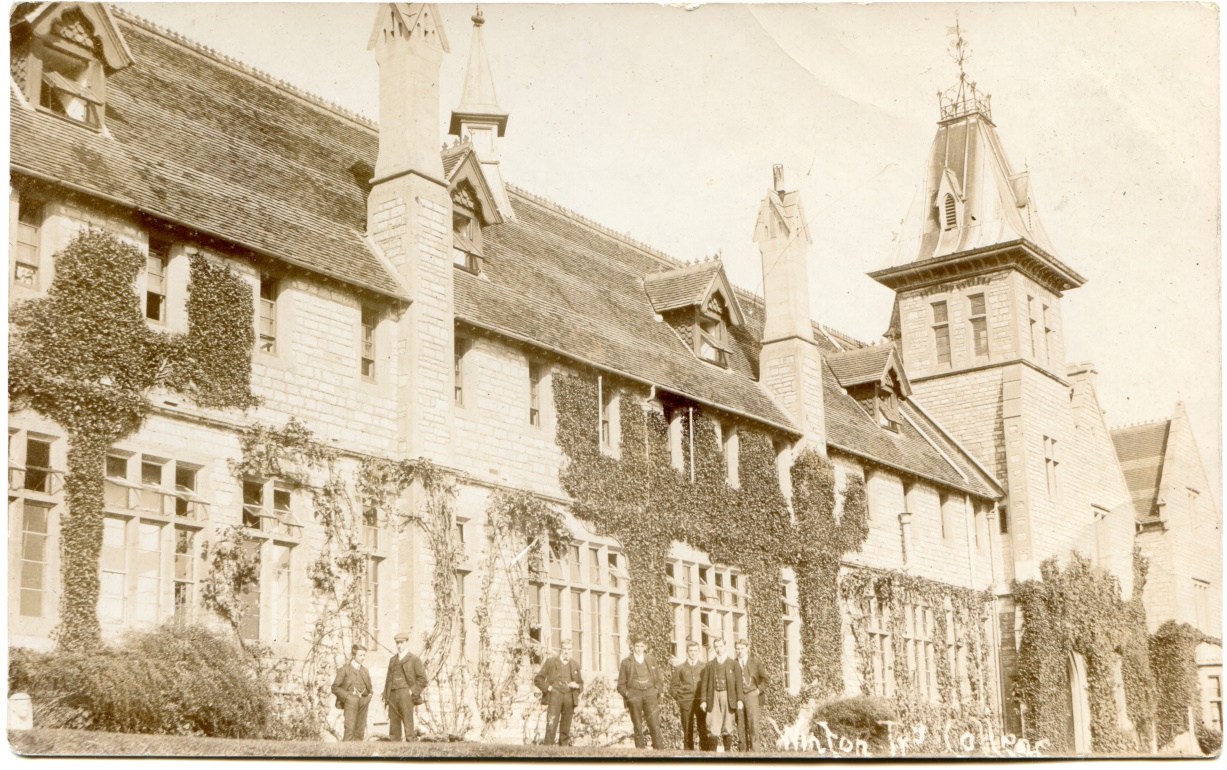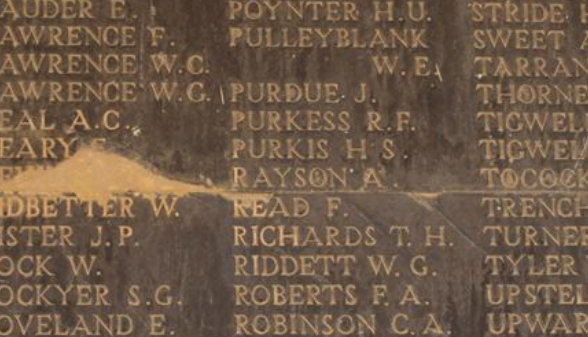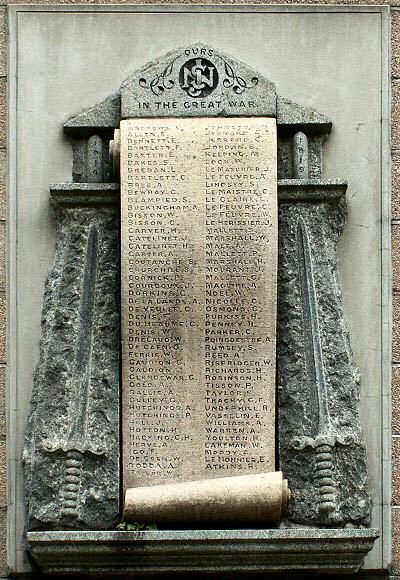Henry Samuel Purkis
Private Henry Samuel Purkis, of the 1/4th Hampshire (TF) Battalion, Regimental Number 3381, died of illness, as a Prisoner of War, age 25, on 1st September 1916, in Iraq, and is commemorated on the Basra Memorial.
Early Life
Henry obviously worked very hard at school as we have evidence from the local Jersey newspaper reports of his examination successes. In 1904 there was a report on the distribution of prizes in the Jersey National Schools:
The annual distribution of prizes to the children attending the Jersey National Schools took place on Wednesday afternoon with the usual eclat
good work done during the year under the able guidance of the genial and popular headmaster Mr Ths Addison. For the first time in the history of the Jersey National School they had been unable to squeeze all the children in the one room for the distribution of prizes. On other occasions by dint of squeezing they had been able to do so.
who, the headmaster affirms, stands out prominently in all subjects. The teachers also endorsed this fact unanimously.
In March 1909 Henry had taken the Preliminary Examination for the Certificate, achieving distinctions in Mathematics and History. He also took exams in Theoretical Inorganic Chemistry and Physiography, being awarded first class passes in both. He was awarded a second class pass in the Archbishops’ Examination for Admission. College records that he was placed 13th in the order of merit in the entrance exam with a mark of 67.5%.
A Career in Teaching
Every man deserves congratulations on their victory, since we believe it is the first time Culham has ever been defeated on their own ground by Winton. 1
After Henry finished his training at Winchester he returned to St. Helier in Jersey, back to the school that he had been a pupil in, the Halkett Place Primary School, also referred to as the Don Street School, and began his teaching career under the guidance of his former headmaster Mr. Thomas Addison. Halkett Place School was located where the Public Library in St Helier now stands. It began as Jersey National School in 1813 and continued to provide education for those who needed it in that part of the town until it finally closed in 1982. From newspaper reports written after his death it is possible to find out a little about his time back in Jersey before war broke out.
Henry was established as a popular and respected teacher at the Don Street School in St. Helier when war was declared. The Jersey Evening Post of Monday 9th November 1914 reported on his departure from Jersey:
Mr H.S.Purkis a popular teacher at the Don Street School left the Island this morning to join the Hampshire Regiment. We wish this patriotic Jersey lad the best of luck and a safe return.
From Jersey to Mesopotamia
At first things went well for the Relief Force. Although each meeting with the Turks was hard fought and there were heavy casualties on both sides, the Turkish Army chose to retreat rather than risk being defeated. As they moved back, the Relief Force followed until eventually they reached the Hanna Defile. The Turkish Army had time to reinforce their positions at Hanna. They were also aided by the geographical features of the location and the weather conditions. The Turks had developed strong defensive positions. The weather had been very wet, turning the ground into a muddy morass and raising the level of the Tigris. This hemmed the Relief Force in between the river and a marsh, where the ground was thick mud, giving them no option but a frontal attack on the Turks. Poor military intelligence and preconceived ideas underestimating the ability of the Turks as soldiers only added to the disadvantages. Everything seemed to be aligned to make it extremely difficult for the attacking force.
The Battle of Umm-el-Hannah on the 21st January 1916 produced heavy casualties of 2,741. The 1/4th Hants started the day with 16 Officers and 339 other ranks but lost 13 of their Officers and 275 men. Henry’s fate on that day was uncertain. Captain Goddard of the 2/4th Hants, wrote to the Principal of the College from Quetta in India.
My dear Principal
I am very sorry to give you ill news of the fate of our two Companies at Sheik Saad 2,near Kut-el-Amara, on January 21st. The Hampshires seem to have suffered almost the worst. The Turkish Infantry are much better shots than the German, and we hear from all sides that nothing like it was ever seen in Flanders. The Colonel and Adjutant were killed. All officers and N.C.O’s being down, a remnant of our fellows reached the trenches. At this point Tarrant and Warne were killedPurkis and HW Rose are missing, probably losing their way in the darkness.
A further letter dated 2nd March 1916 stated:
The following are in Kut-el-Amara:” Windust, Singleton, Bolwell, Bogie, Leach, and Philbrick. Reports differ about Purkis.
What happened to Henry on 21st January at Hanna, and subsequently, is told in a newspaper report, The Jersey Evening Post from 12th May 1916 which stated:
A Popular Jersey Teacher Wounded and a Prisoner.
Some months ago Mr Purkis of the GPO received news that his son H.S. Purkis, a well-known and popular member of the teaching staff of the National School who joined the forces and proceeded to India shortly after the outbreak of war, was reported missing in Mesopotamia. During the last few weeks the relatives have been anxiously awaiting further tidings, but their anxiety has now been relieved by the official news received here yesterday that this loyal soldier is wounded and a prisoner in Baghdad. This news was communicated yesterday by Mr T Addison to the boys of the National School and was received with lusty cheers. We sincerely hope that this soldier will rapidly recover from his wounds and at the close of the war be able to take up his former profession.
After his capture by the Turks, Henry was transferred to Baghdad. We do not know the nature or severity of the wounds Henry suffered at Hanna, but as he was put on the list of soldiers to be exchanged, along with some of those recently brought to Baghdad from Kut, it is fair to assume that medically Henry was in a bad condition. He boarded the Turkish steamer SS Khalifa and was taken down the Tigris to Shumran. Once the prisoners reached Shumran, they were transferred to another Turkish steamer, the SS Busra. At this point, there was a delay of three weeks while the finer details of the prisoner exchange were worked out between the two sides. It was during these negotiations that Henry died, succumbing to dysentery. Some of this information we can see in the lists of the dead provided by Colonel Hehir. The Colonel was the senior Medical Officer inside Kut. He was held at Baghdad and then exchanged along with other prisoners, at the same time as Henry. He compiled his lists once he reached Basra, and probably because of this, there are anomalies in his record, although we have no reason to believe that his information about Henry was incorrect. He states that Henry died of dysentery on the 28th August 1916, whilst aboard the SS Busra.
Henry was part of the second exchange of prisoners, the first being soon after the surrender at Kut. The second exchange was in part to clear the backlog of prisoners left at Baghdad who had not been fit enough to join the onward march towards Anatolia. This group of prisoners included those who, like Henry, had been part of the Relief Force but were sick or injured. Colonel Hehir’s lists tell us that during the delay at Shumran, 8 British and 5 Indian Other Ranks died, mainly of disease. They would have been buried at Shumran, but those graves have long since been lost. Friends and colleagues waiting for news back home in Jersey had their hopes for Henry’s safe return dashed in late September when news of his death was published in the Jersey Evening Post.
The relatives of Private H Purkis, formerly Assistant Head Master at the Jersey National School, have been officially notified of the death of their son from disease. The date and place of death as well as the nature of the disease are not known. The deceased was at Kut with General Townshend and was made prisoner when the gallant garrison surrendered. 3 The news was communicated to the scholars by Mr Addison who referred in glowing terms to the valued assistance he had always received from Mr PurkisWe offer our sympathy to the members of the family.
In October 1916 a Memorial Service was held for Henry in St. Helier. An account of this appeared in the newspaper:
A large congregation was present, this included several members of the bereaved family and a number of acquaintances and friends of the late soldier who was held in the highest esteem and regard by all who he had come into contact withby his close attention to his duties and his courteous disposition and high character he had won the esteem of the Headmaster and staff whilst the scholars had always looked upon him as a true friend. When off duty he took the greatest of interest in the boys’ welfare and had been one of the principal promoters of the Schools Football League, which up to the outbreak of war was such a flourishing concern. He had also interested himself in many other societies for the good of the rising generation and of him it might truthfully be said he went about doing good. At the outbreak of hostilities he gave up a promising career
That every young man who is physically fit and who can do so, should follow his example, that his duty is not here but away where (he) can perform a much larger service than can possibly be offered here.
Basra War Memorial Panel photograph courtesy of the Royal Hampshire Regimental Museum
Researcher and Author: Dee Sayers
Footnotes
- Culham College in Abingdon was a similar institution to Winchester Training College, founded by Samuel Wilberforce, the Bishop of Oxford in 1851
- It was mistakenly named as the Battle of Sheik Saad in this letter but the date fixes it as the Battle of Hanna.
- Henry was not at Kut with Major-General Townshend. There is always the risk of confusion when contemporary accounts are written and this illustrates why it is not advisable to believe everything you read in the papers!
Sources
Ancestry (2018). Home page. [online] Available at: www.ancestry.co.uk [Accessed 2018].
Alwyn Ladell photography. (2018). Home page. [online] Available at: https://www.flickr.com/photos/alwyn_ladell/sets/72157665876163520/ [Accessed 2018].
Barber, Major, C., IMS: (1918) Besieged in Kut and After. Available as a download : [ In-text: (barber, 1918) Your Bibliography: Barber, C., 1918. Besieged in Kut and After. 2nd ed. [ebook] Edinburgh and London: William Blackwood and Sons. Available on: archive.org
British Newspaper Archive (2018). Jersey Independent and Daily Telegraph – Saturday 13 February 1909. [online] Available at: www.britishnewspaperarchive.co.uk [Accessed 2018].
Crowley, P. (2016). Kut 1916: the forgotten British disaster in Iraq. Stroud: The History Press.
Mellis,C.,Hehir,P., et al,n.d. Military Collection No 425 File 1284. [online] The British Library. Available at: http://www.bl.uk/manuscripts/Viewer.aspx? ref=ior!l!mil!7!18454_f001r [Accessed 9 April 2021]. (The reference for the lists location within the file is f.5r to f8r.)
Thegreatwarci.net (2018). The Channel Islands and the Great War, Purkis, H.S. [online] Available at: www.greatwarci.net/honour/jersey/database/purkis-hs-basramem.htm [Accessed 2018].
Theislandwiki.org (2014). Halkett Place School, Jersey National School. [online] Available at: https://www.theislandwiki.org/index.php/Halkett_Place_School [Accessed 2018].
The William Leach Collection (Various). Records of RSM W.F. Leach including the records of Mrs. E. Bowker [documents, notebooks, photographs and artefacts] The Royal Hampshire Regimental Museum, Winchester.
Vickers, J. University of Winchester Chapel Memorial Rail image.
With special thanks to “Charlie962” of The Great War Forum for additional information.
| University of Winchester Archive “ Hampshire Record Office | ||
| Reference code | Record | |
| 47M91W/ | P2/4 | The Wintonian 1899-1900 |
| 47M91W/ | P2/5 | The Wintonian 1901-1902 |
| 47M91W/ | P2/6 | The Wintonian 1903-1904 |
| 47M91W/ | P2/7 | The Wintonian 1904-1906 |
| 47M91W/ | P2/8 | The Wintonian 1905-1907 |
| 47M91W/ | P2/10 | The Wintonian 1908-1910 |
| 47M91W/ | P2/11 | The Wintonian 1910-1914 |
| 47M91W/ | P2/12 | The Wintonian 1920-1925 |
| 47M91W/ | D1/2 | The Student Register |
| 47M91W/ | S5//5/10 | Photograph of 5 alumni in Mesopotamia |
| 47M91W/ | Q3/6 | A Khaki Diary |
| 47M91W/ | B1/2 | Reports of Training College 1913-1914 |
| 47M91W/ | Q1/5 | Report and Balance Sheets 1904- 1949 |
| 47M91W/ | R2/5 | History of the Volunteers Company 1910 |
| 47M91W/ | L1/2 | College Rules 1920 |
| Hampshire Record Office archive | ||
| 71M88W/6 | List of Prisoners at Kut | |
| 55M81W/PJ1 | Managers’ Minute Book 1876-1903 | |
| All material referenced as 47M91W/ is the copyright of The University of Winchester. Permission to reproduce photographs and other material for this narrative has been agreed by the University and Hampshire Record Office. | ||







